The state of Florida is home to many species of bluebirds, including the Eastern Bluebird, the Blue Grosbeak, and the Indigo Bunting. These birds are often seen in open woodlands, fields, and backyards.
They are easy to identify by their bright blue plumage and cheerful chirping calls. Bluebirds are a great addition to any garden or outdoor space, providing a splash of color and a pleasant ambiance.
In addition to providing visual and auditory appeal, these amazing creatures also provide essential ecosystem services, like eating insects and dispersing seeds. With their vibrant color and pleasant song, bluebirds in Florida are truly a sight to behold.
1. Eastern Bluebird
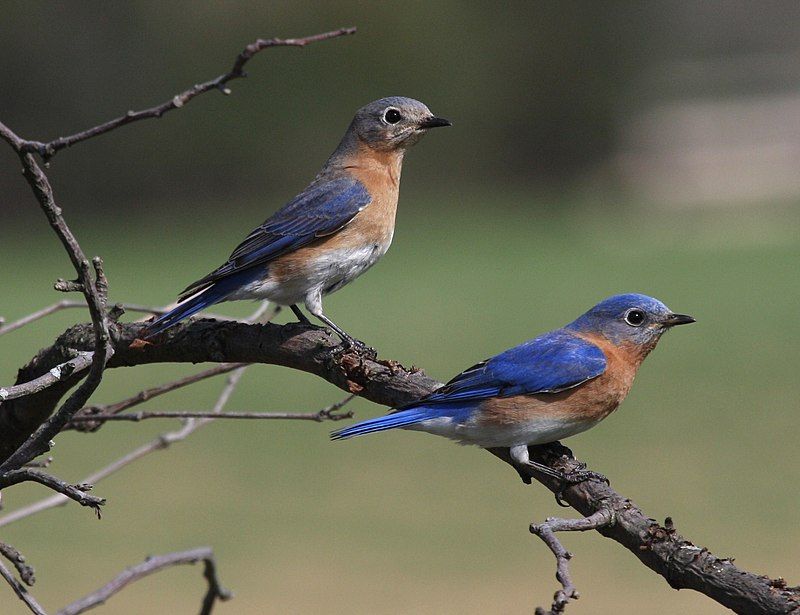
The Eastern Bluebird is a small songbird that is native to North America. It is a member of the thrush family and is well-known among birders for its bright blue breeding plumage.
It is a migratory species, which means that it moves between two different locations during the year.
The Eastern Bluebird prefers to inhabit open woodlands, farmlands, and orchards, as these areas provide the essentials for its survival, such as food, shelter, and breeding sites.
It is usually seen perched on a wire or an open perch, where its striking blue feathers can easily be spotted. This makes it a favorite among birders, who come from all over to observe its beauty.
| Kingdom | Animalia |
| Phylum | Chordata |
| Class | Aves |
| Order | Passeriformes |
| Family | Turdidae |
| Genus | Sialia |
| Species | S. sialis |
2. Blue Jay
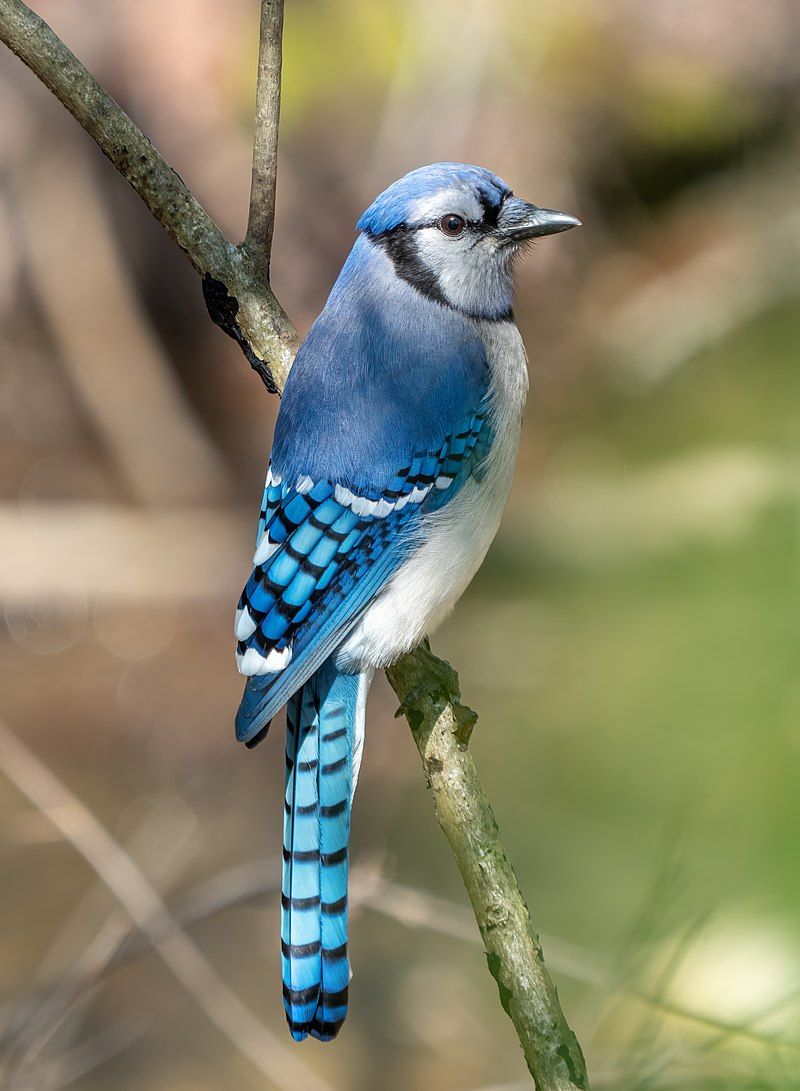
The blue jay is a type of bird that belongs to the Corvidae family and is native to the eastern part of North America. It is known to inhabit most of the eastern and central parts of the United States and some of its populations may be migratory.
In addition to this, blue jays can also be found in Newfoundland, Canada and they have a breeding population that is spread across the southern region of Canada. Thus, the blue jay is a species that is widely spread out across the North American continent.
| Kingdom | Animalia |
| Phylum | Chordata |
| Class | Aves |
| Order | Passeriformes |
| Family | Corvidae |
| Genus | Cyanocitta |
| Species | C. cristata |
3. Florida Scrub Jay
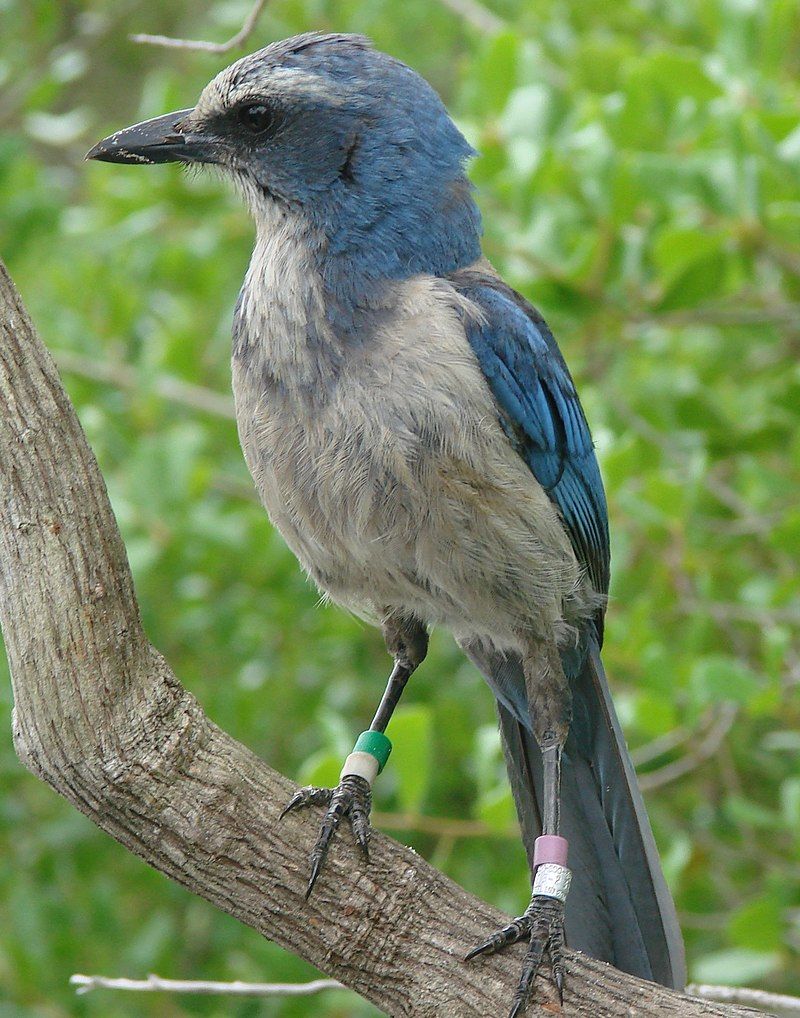
The Florida scrub jay is an interesting species of bird that is native to North America. This species of scrub jay is the only one that is endemic to the U.S. state of Florida, meaning that it is found nowhere else in the world.
In fact, out of all the species of birds in the continental United States, this is one of only fifteen that are endemic.
This makes the Florida scrub jay a very unique bird and highly sought after by bird watchers, who travel far and wide to catch a glimpse of it in its natural habitat. The scrub jay is a small bird with a light grayish-blue head, a white throat, and a blue-gray back and wings.
It is found mainly in the dry, open woodlands of the Florida peninsula, and is considered an important part of the state’s natural habitats.
The Florida scrub jay is also known for its intelligence and its ability to remember where it has stored food, and can often be seen caching food in the ground in order to save it for later.
All in all, the Florida scrub jay is a fascinating species of bird that is highly sought after by bird watchers.
| Kingdom | Animalia |
| Phylum | Chordata |
| Class | Aves |
| Order | Passeriformes |
| Family | Corvidae |
| Genus | Aphelocoma |
| Species | A. coerulescens |
4. Indigo Bunting
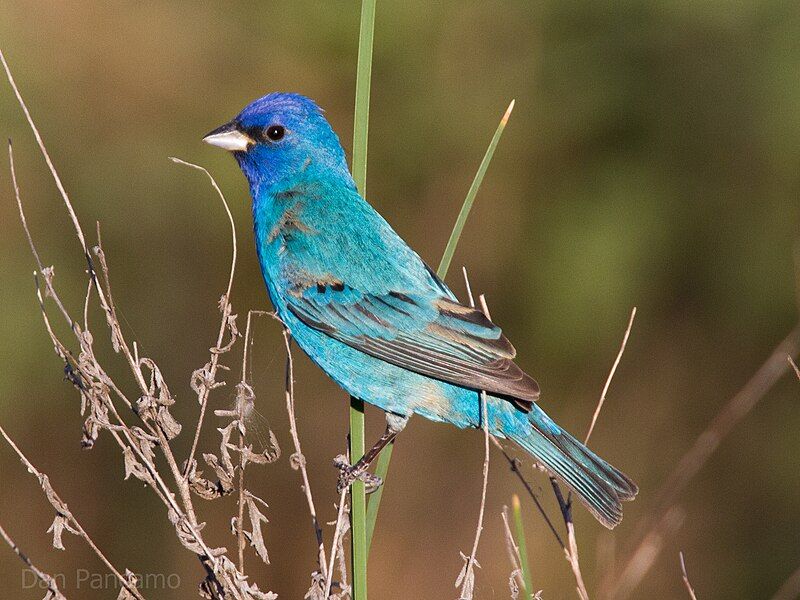
The indigo bunting is a small, vibrant-blue bird belonging to the Cardinalidae family. It is known to migrate seasonally, traveling from southern Canada to northern Florida during the breeding season and from southern Florida to northern South America during the winter.
The bird is well-known for its ability to navigate by the stars during its nocturnal migrations. This instinctive behavior has become a symbol of the indigo bunting as if its migrations are guided by the stars. The indigo bunting is a small songbird that mainly feeds on seeds.
During the breeding season, it can be found in open woodlands and grasslands of eastern and central North America. In the winter, it migrates to the tropical forests of South America, where it seeks shelter in dense vegetation.
With its bright blue feathers and melodious songs, the indigo bunting is a welcome sight throughout its range. The indigo bunting is an important species for understanding bird migration patterns.
It is one of the few species that use stars to navigate during their nocturnal migrations. This behavior allows the indigo bunting to travel vast distances despite the darkness of night.
By studying the migration patterns of the indigo bunting, researchers are better able to understand the behavior and movements of other migratory species. The indigo bunting is an iconic bird species, admired for its beauty and its amazing migratory abilities.
Its vibrant blue feathers and melodious songs bring joy to those who encounter it. Its ability to navigate using the stars is a testament to its remarkable instinctive behavior. The indigo bunting is an important species that deserves our admiration and protection.
| Kingdom | Animalia |
| Phylum | Chordata |
| Class | Aves |
| Order | Passeriformes |
| Family | Cardinalidae |
| Genus | Passerina |
| Species | P. cyanea |
5. Blue-Headed Vireo
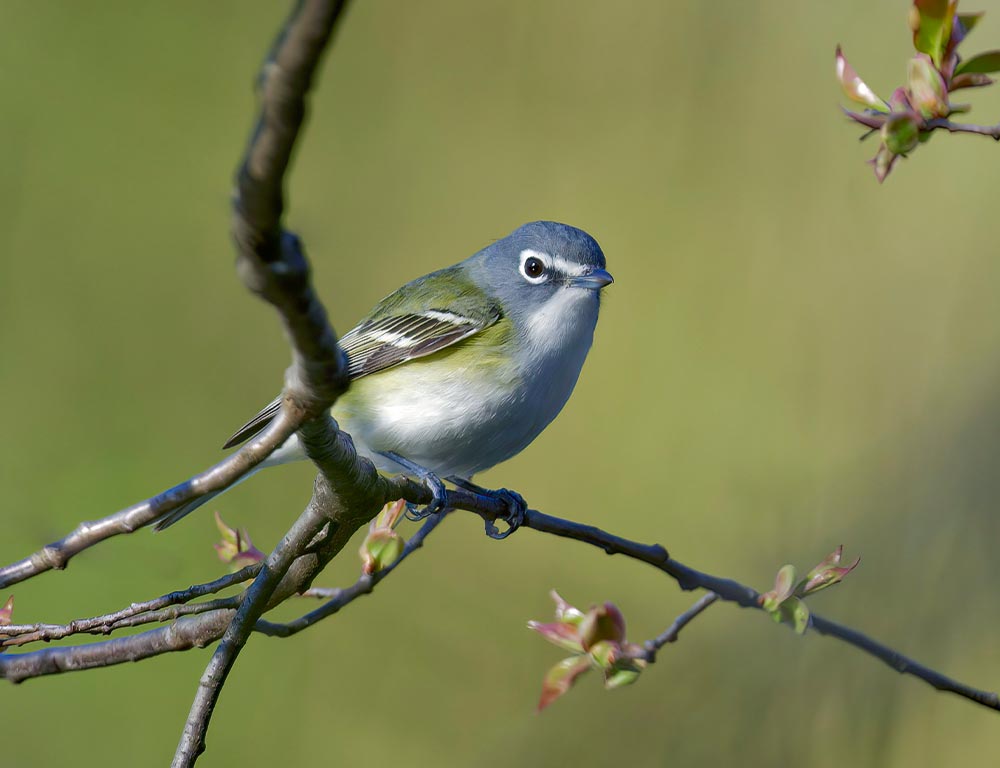
The blue-headed vireo is a species of songbird that travels between North and Central America every year. It is known as a Neotropical migrant, indicating that it travels between two different regions.
There are currently two recognized subspecies of this species, and it has a wide range across Canada, the eastern coast of the United States, Mexico, and some parts of Central America. The blue-headed vireo is a small bird, typically measuring around 5.5 inches in length.
It has a bright blue head, wings, and tail, with a white breast and a yellow belly. Its habitat consists of open woods, especially in deciduous or mixed woodlands, as well as plane grasslands, gardens, and parks.
It is commonly seen hopping from branch to branch or flying low and rapidly over the ground. These birds are primarily insectivores, meaning that they feed mainly on insects. They also consume fruits, berries, and some seeds.
During the breeding season, they build cup-like nests in the branches of trees or shrubs and lay 3-5 white or pale blue eggs. The blue-headed vireo is an important species in its ecosystem, as it serves as a food source for other animals, such as mammals and birds of prey.
It is also an important indicator of the health of its habitat, as its presence is an indication that the habitat is suitable for other species.
| Kingdom | Animalia |
| Phylum | Chordata |
| Class | Aves |
| Order | Passeriformes |
| Family | Vireonidae |
| Genus | Vireo |
| Species | V. solitarius |
6. Tree Swallow
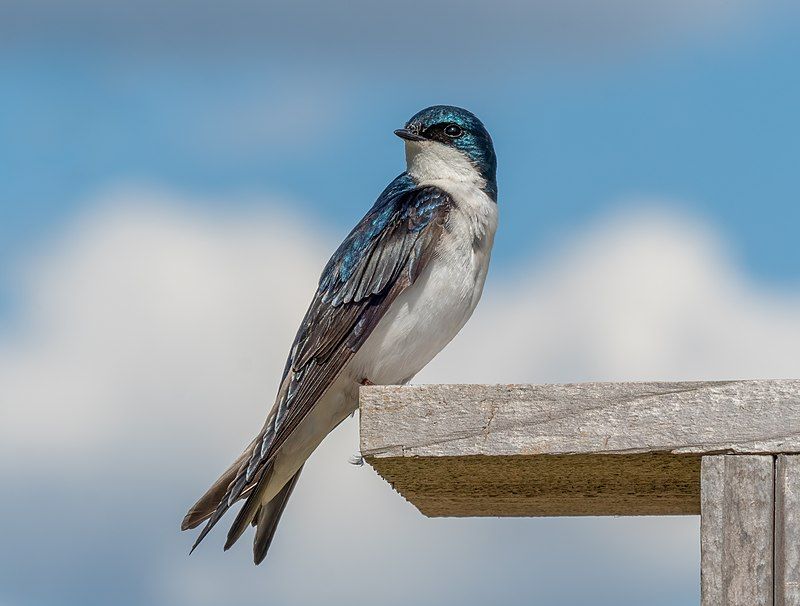
The Tree Swallow is a migratory bird that is part of the Hirundinidae family. It is native to the Americas and was first documented by French ornithologist Louis Vieillot in 1807 with the scientific name of Hirundo bicolor.
Since then, it has been moved to its current genus, Tachycineta, and its exact placement in the phylogenetic tree is still being debated by scientists. The Tree Swallow is a small passerine bird. It has a white belly and blue-green back, and a forked tail.
It is usually found in open areas, such as grasslands, fields, and wetlands. It feeds mainly on insects, such as flies, beetles, and moths.
Tree Swallows are migratory birds, traveling from Canada and the northern United States to their wintering grounds in Mexico and Central America. During migration, they are seen in large flocks of up to hundreds of individuals.
The Tree Swallow is a protected species in many countries, such as the United States, Canada, and Mexico. Conservation efforts have been successful in increasing the population of this species in recent years.
| Kingdom | Animalia |
| Phylum | Chordata |
| Class | Aves |
| Order | Passeriformes |
| Family | Hirundinidae |
| Genus | Tachycineta |
| Species | T. bicolor |
7. Aphelocoma
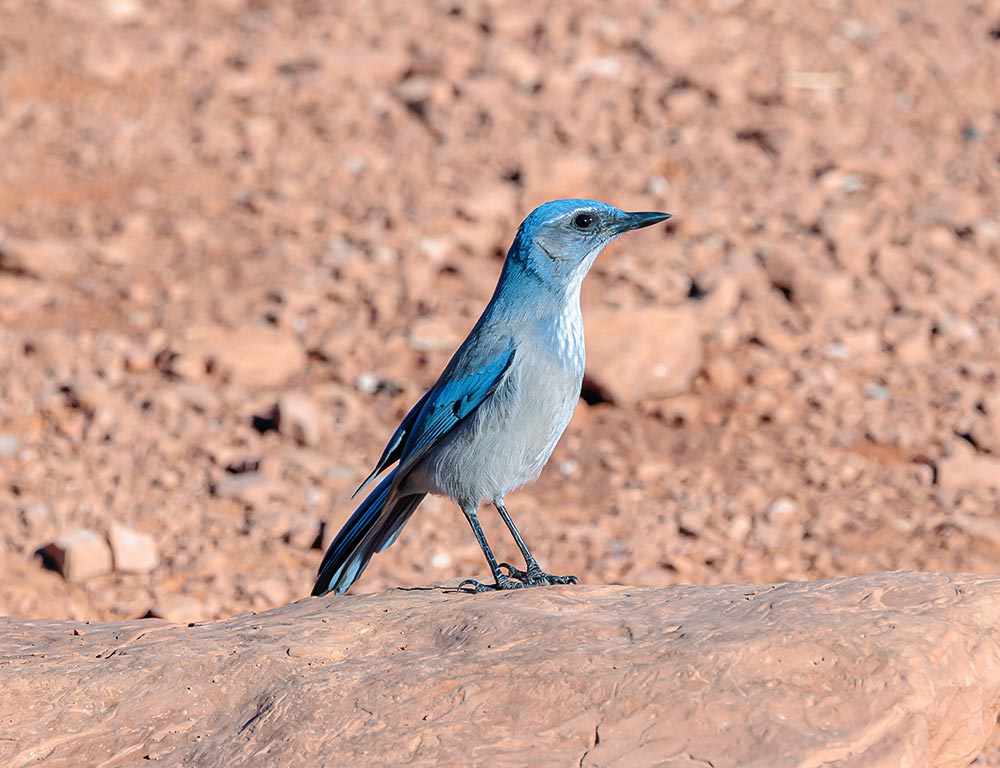
The passerine birds of the genus Aphelocoma are a type of New World jay found in many different parts of the world. They are typically found in Mexico, western Central America, and the western United States.
There is an outlying population of Aphelocoma passerine birds found in Florida as well. These passerine birds are commonly referred to as scrub jays or their relatives. Scrub jays are small birds with blue-grey bodies and white markings on their wings.
They have a distinct black stripe on the top of their heads and can be identified by their loud calls. They are relatively common birds and can be found in a variety of habitats, from open woodlands to shrubby areas.
They feed on a variety of items, including nuts, berries, insects, and small reptiles. The Aphelocoma passerine birds of the genus Aphelocoma are an important part of the ecosystem, as they help to disperse seeds and pollinate plants.
They are also known to act as sentinels, warning other birds of potential danger. They are an important part of the environment and should be protected and conserved.
| Kingdom | Animalia |
| Phylum | Chordata |
| Class | Aves |
| Order | Passeriformes |
| Family | Corvidae |
| Genus | Aphelocoma |
8. Little Blue Heron
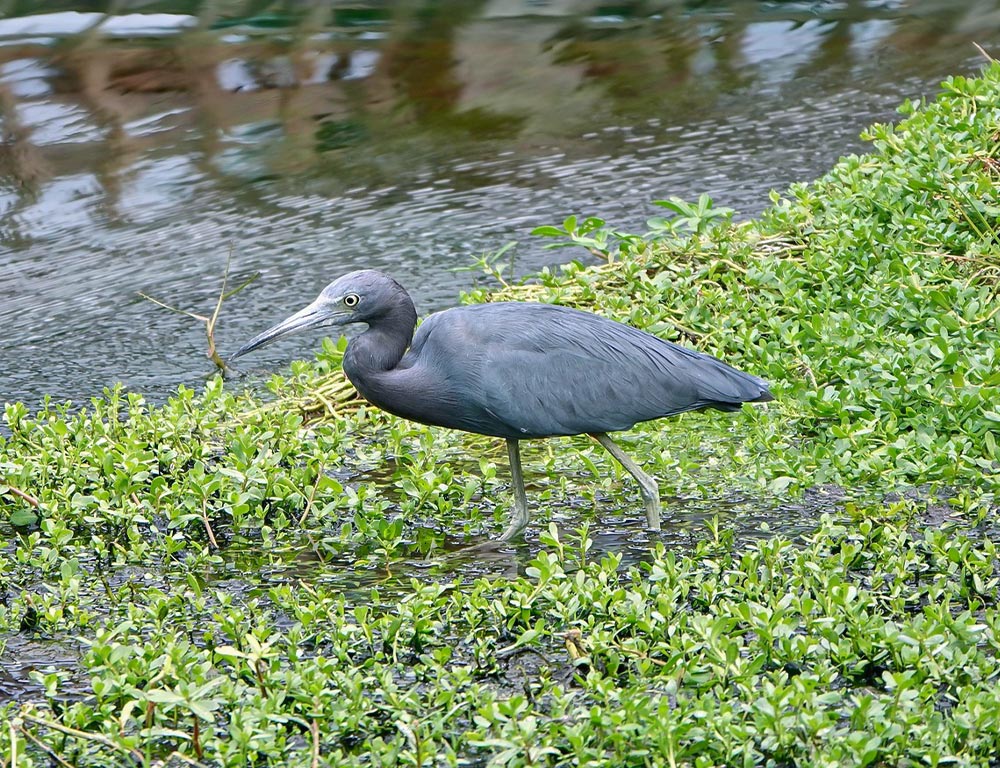
The little blue heron is a small, dark-colored heron of the Egretta genus. It has a distinctive two-toned bill, and juveniles are entirely white, making them look like a snowy egret.
During its breeding season, the adult little blue heron develops different markings and colors on its head, legs, and feet, making it easily distinguishable from other herons.
The little blue heron is native to the southern United States and northern Mexico and can be found foraging in shallow wetlands, marshes, and estuaries.
It feeds on small fish, crustaceans, and insects, and can often be seen standing still in shallow waters, waiting for its prey. During the breeding season, males and females pair up and build nests in trees near the water.
The female lays two to four eggs, which are incubated by both parents. The little blue heron is a protected species, and the population is slowly growing. Conservation efforts are helping to ensure that the species will continue to thrive in its natural habitat.
| Kingdom | Animalia |
| Phylum | Chordata |
| Class | Aves |
| Order | Pelecaniformes |
| Family | Ardeidae |
| Genus | Egretta |
| Species | E. caerulea |
9. Great Blue Heron
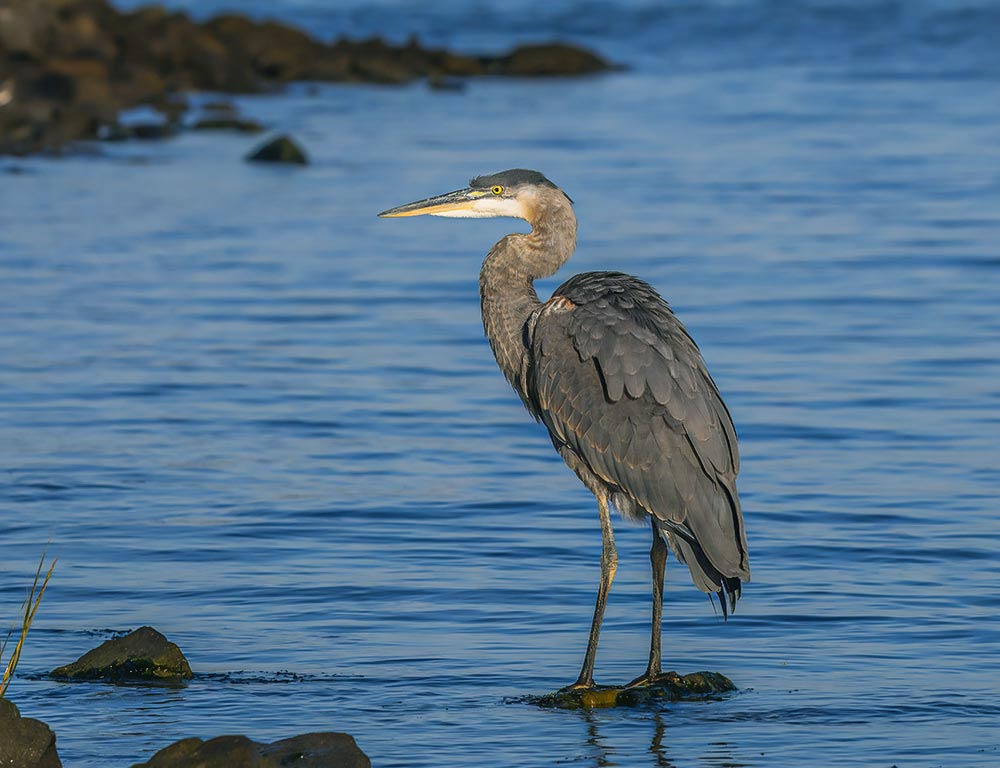
The great blue heron is a majestic bird found in many parts of the world. It belongs to the heron family Ardeidae, which is a large group of wading birds. These birds are commonly found near the shores of open water, such as rivers, lakes, and oceans, as well as in wetlands.
In North and Central America, the great blue heron can be found in almost every state, province, and territory, including far northwestern South America, the Caribbean, and the Galápagos Islands. The great blue heron is a large bird, with a wingspan of up to 6 feet.
It has a long neck, a long pointed bill, and long legs. The color of a great blue heron’s feathers can range from light grey to dark grey, and males and females look alike.
The bird generally feeds on fish, frogs, and small mammals. The great blue heron is a solitary bird, but it can often be found in flocks during the winter months. During the breeding season, the heron can be seen in pairs, as they engage in courtship behaviors.
The male and female will build a nest together, usually in tall trees near water sources. The female will lay up to four eggs, which hatch after about a month. Overall, the great blue heron is a fascinating bird with a wide distribution.
It is a great sight to behold and is a protected species in many parts of the world.
| Kingdom | Animalia |
| Phylum | Chordata |
| Class | Aves |
| Order | Pelecaniformes |
| Family | Ardeidae |
| Genus | Ardea |
| Species | A. herodias |
10. Blue Grosbeak
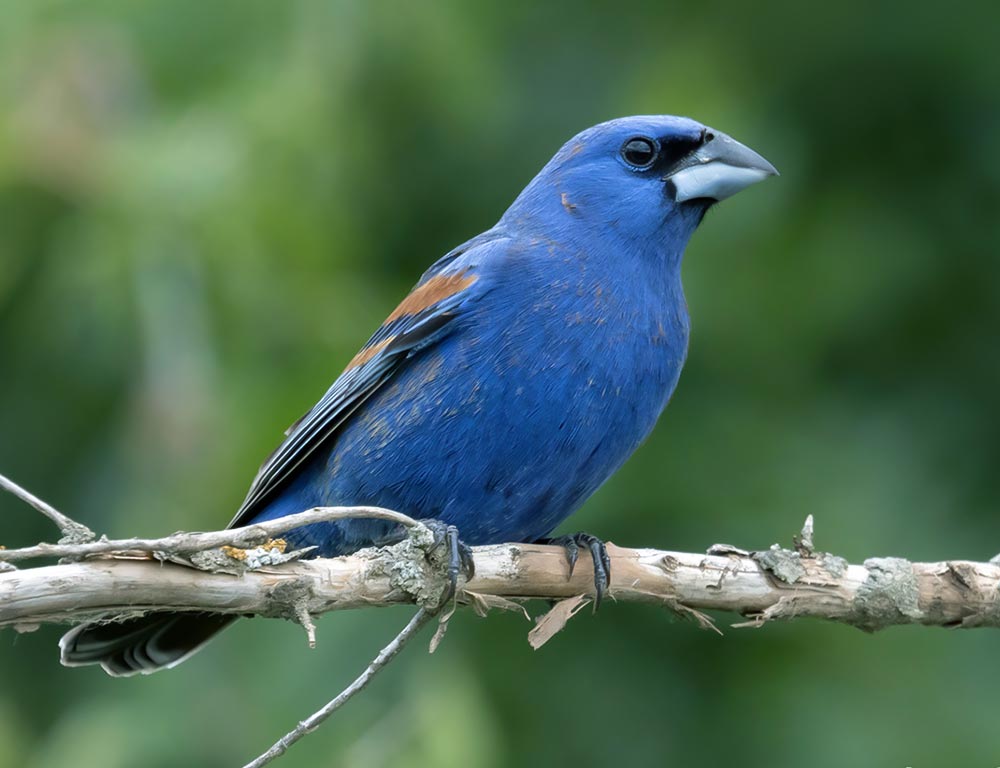
The blue grosbeak is a medium-sized bird belonging to the cardinal family Cardinalidae. It is mainly migratory, meaning it spends the winter in Central America and then breeds in northern Mexico and the southern United States.
The male is easily identifiable due to its blue plumage with two brown wing bars. The blue grosbeak is a beautiful bird to observe, and can often be seen perched atop tree branches or flying in small flocks.
It is a valuable member of the avian community, and its presence is a sign of a healthy ecosystem.
| Kingdom | Animalia |
| Phylum | Chordata |
| Class | Aves |
| Order | Passeriformes |
| Family | Cardinalidae |
| Genus | Passerina |
| Species | P. caerulea |
11. Herons
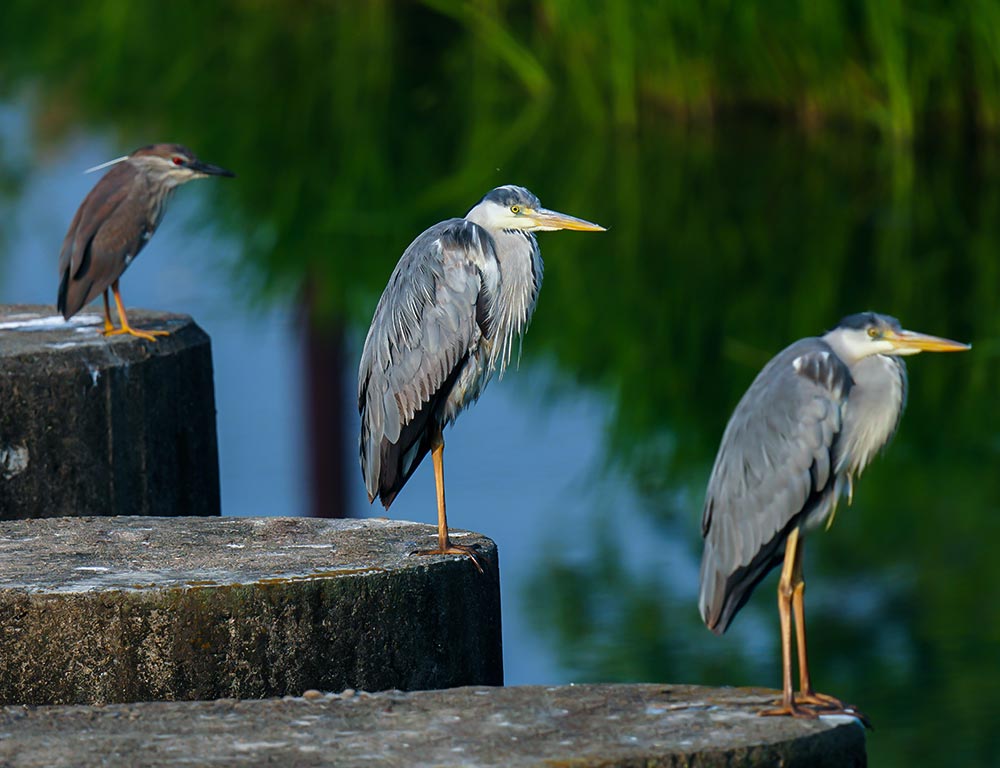
Herons are a diverse group of birds that inhabit freshwater and coastal areas around the world. They belong to the family Ardeidae and there are currently 72 recognized species.
They are known for their long legs and necks, which allow them to wade into deeper waters than other birds. Herons are often seen standing still in shallow water with their necks stretched out, patiently waiting to catch small fish or insects.
Some species, such as the egrets and bitterns, are often mistaken for herons because of their similar size and shape, but they are different species. Herons are an important part of the natural ecosystem and they help keep the food chain in balance.
They feed on small fish, crustaceans, and insects, and can be found in a variety of habitats including wetlands, rivers, lakes, and coastal areas. Herons play an important role in controlling pest populations, and their presence is a sign of a healthy environment.
| Kingdom | Animalia |
| Phylum | Chordata |
| Class | Aves |
| Order | Pelecaniformes |
| Family | Ardeidae |
12. Barn Swallow
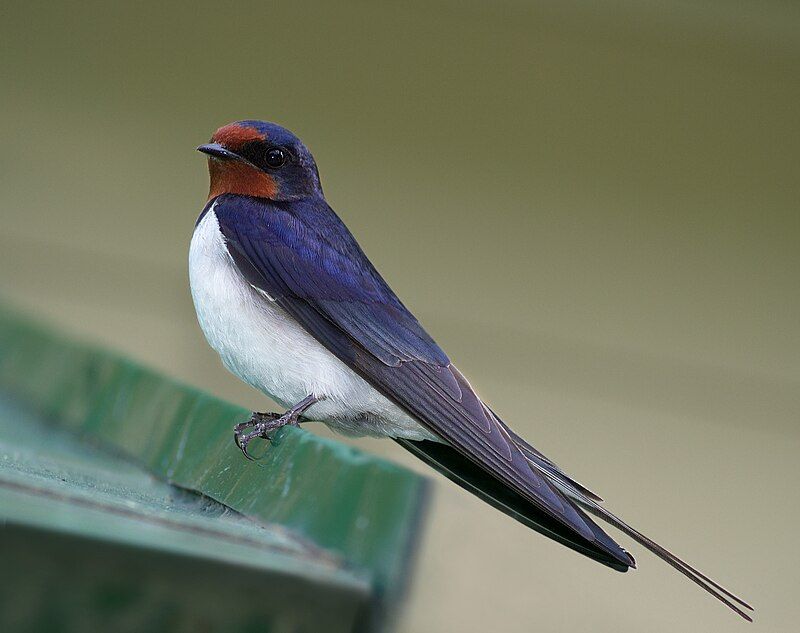
The barn swallow is a species of swallow that is found in a wide variety of locations around the world. It has a natural distribution of over 251 million square kilometers, making it the most widespread species of swallow on the planet.
It is easily identifiable due to its unique features, such as its blue upperparts and its long, deeply forked tail. The barn swallow is a migratory bird, traveling between the northern and southern hemispheres to escape the cold winter months.
It typically breeds in open areas, such as fields, meadows, and wetlands, and builds its nest in barns, sheds, and other human-made structures.
During the breeding season, it feeds on flying insects, such as flies, beetles, and moths. The barn swallow is an important species in many parts of the world, as it helps to control insect populations.
It is also seen as a sign of good luck in many cultures, and its song is often seen as a sign of spring.
This species has been declining in recent years due to habitat destruction and the use of pesticides, but there are still many barn swallows out there that are doing their part to keep our environment healthy.
| Kingdom | Animalia |
| Phylum | Chordata |
| Class | Aves |
| Order | Passeriformes |
| Family | Hirundinidae |
| Genus | Hirundo |
| Species | H. rustica |
13. Black-throated blue warbler
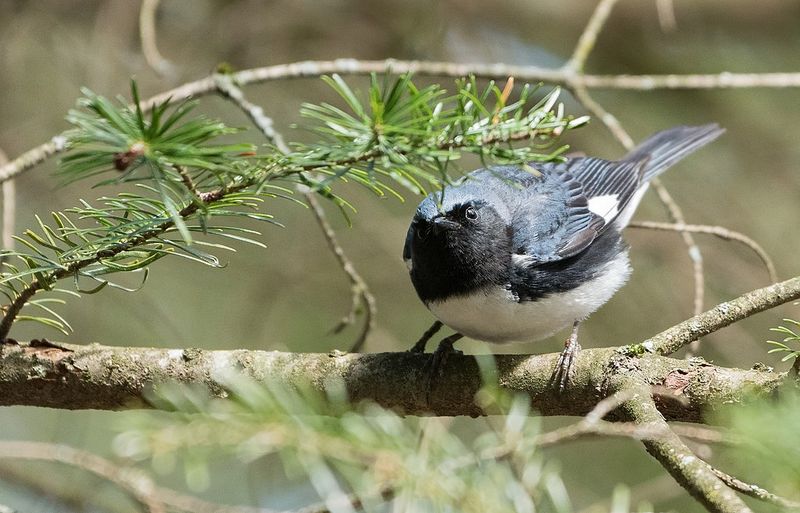
The black-throated blue warbler is a small passerine bird of the New World warbler family. It is a brightly colored songbird that is found in deciduous and mixed coniferous forests across eastern North America.
During the breeding season, these warblers can be seen flying around in search of food and nesting sites. They feed on insects, berries, and seeds, and they build nests in low shrubs and trees. In the cooler months, these birds migrate south to warmer climates.
They travel to the many islands in the Caribbean and Central America, where they spend the winter. During this time, they feed on fruits and insects found in these regions.
After the winter season, they travel back north to their breeding grounds in North America to breed and raise their young. The black-throated blue warbler is a very hardy bird, able to survive the cold winters and reproduce in the warmer months.
They are an important part of the ecosystem, providing food for other animals and helping to control insect populations. They are also a beautiful sight to behold, with their vibrant blue and yellow plumage.
| Kingdom | Animalia |
| Phylum | Chordata |
| Class | Aves |
| Order | Passeriformes |
| Family | Parulidae |
| Genus | Setophaga |
| Species | S. caerulescens |
14. Blue-gray Gnatcatcher
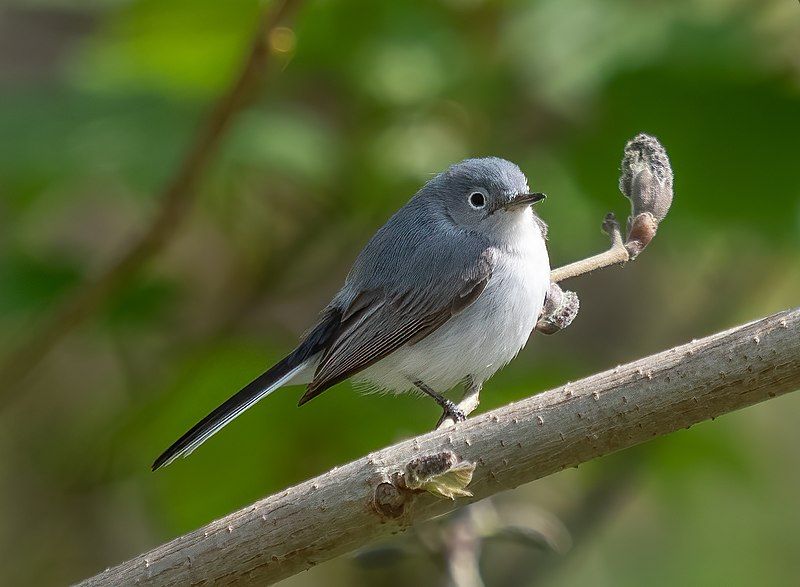
The blue-gray gnatcatcher is a delightful little creature native to North America. It is a small songbird that can be easily identified by its distinctive blue-gray coloring. The bird has a white underside, a black tail, and a white eye ring.
Its bill is small and thin, and its legs are short. The species can be found in deciduous and coniferous woods, as well as in thickets and other shrubby habitats. The blue-gray gnatcatcher feeds on small insects, such as gnats, flies, and beetles.
It will also eat fruits and berries. The bird’s diet is supplemented by nectar from flowers. It is an important pollinator for many native plants. The blue-gray gnatcatcher is a sociable bird, often seen in flocks of up to thirty birds.
The species is monogamous, with pairs staying together for life. They nest in low shrubs or trees, usually near water. The female will lay between three and six eggs in a nest made of twigs, grass, lichen, and spider webs.
Both parents take part in the nesting process. The blue-gray gnatcatcher is a beautiful bird that is an important part of North American ecosystems. It is a pleasure to observe these birds in their natural habitat.
| Kingdom | Animalia |
| Phylum | Chordata |
| Class | Aves |
| Order | Passeriformes |
| Family | Polioptilidae |
| Genus | Polioptila |
| Species | P. caerulea |
15. Common starling
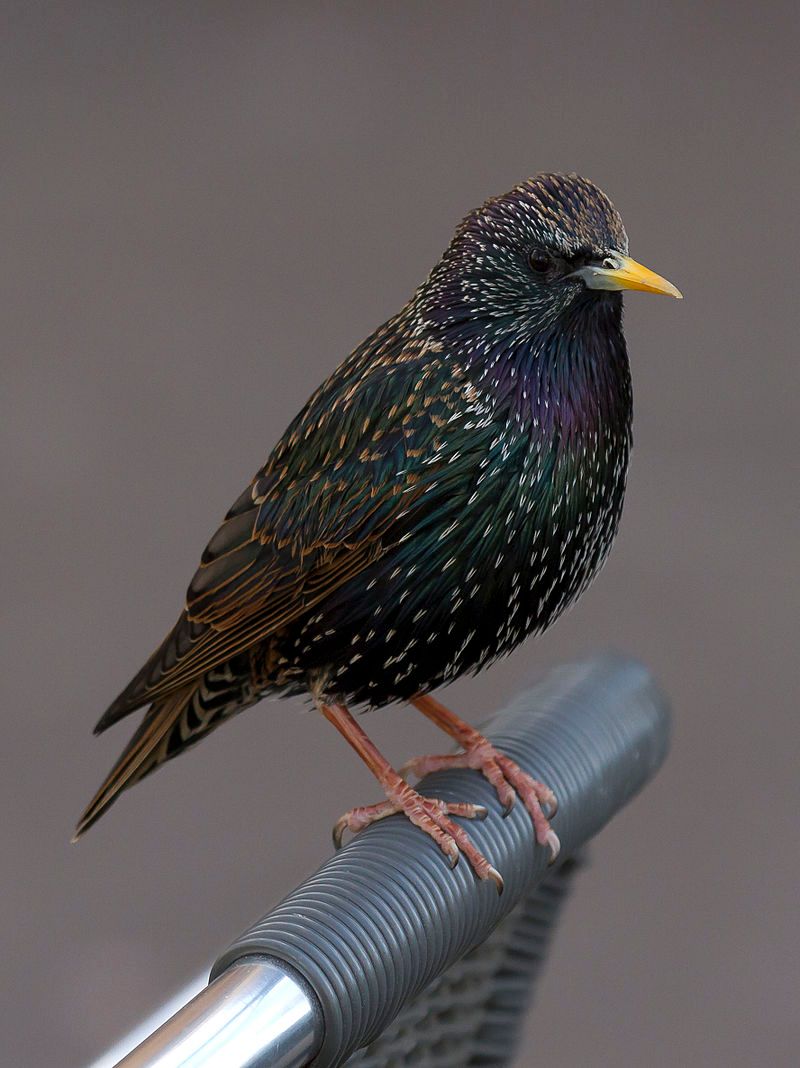
The common starling is a bird species belonging to the family Sturnidae, commonly known as the starling family. It is a medium-sized passerine bird, native to Europe, Northern Africa, and parts of Asia.
In North America, it is known as the European starling, and in Great Britain and Ireland, it is simply referred to as the starling. The common starling is known for its adaptability and aggressive behavior and is one of the most widespread and abundant birds in the world.
It is a common sight in cities, parks, and gardens, and can often be seen in flocks of several hundred birds. Its plumage is usually black with a metallic sheen, and it has a short, triangular beak.
The common starling is a social bird and is often seen in large flocks, performing aerial acrobatics, and performing complex vocalizations. It is an important food source for many species of birds and mammals and is an important part of many ecosystems.
| Kingdom | Animalia |
| Phylum | Chordata |
| Class | Aves |
| Order | Passeriformes |
| Family | Sturnidae |
| Genus | Sturnus |
| Species | S. vulgaris |
16. Northern Parula
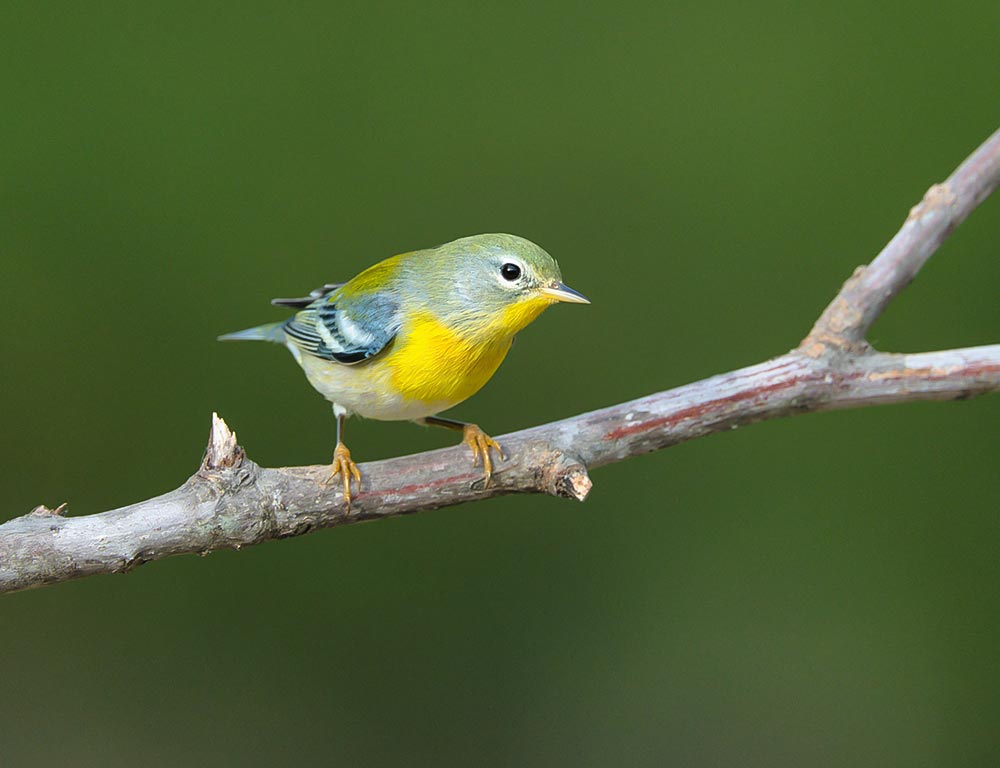
The northern parula is a species of warbler that is native to North America. It is a small bird, approximately 4.5 inches in length, and is easily recognizable by its bright yellow-green upperparts and bluish-gray underparts.
The northern parula breeds in eastern North America, ranging from southern Canada down to Florida. This species prefers to nest in coniferous and deciduous forests, usually near water, and can often be found near swamps and wet meadows.
They feed mainly on insects, which they capture by gleaning from foliage or catching in mid-air. They are migratory birds, spending their winters in the Caribbean and Central America.
| Kingdom | Animalia |
| Phylum | Chordata |
| Class | Aves |
| Order | Passeriformes |
| Family | Parulidae |
| Genus | Setophaga |
| Species | S. americana |
17. Common Gallinule
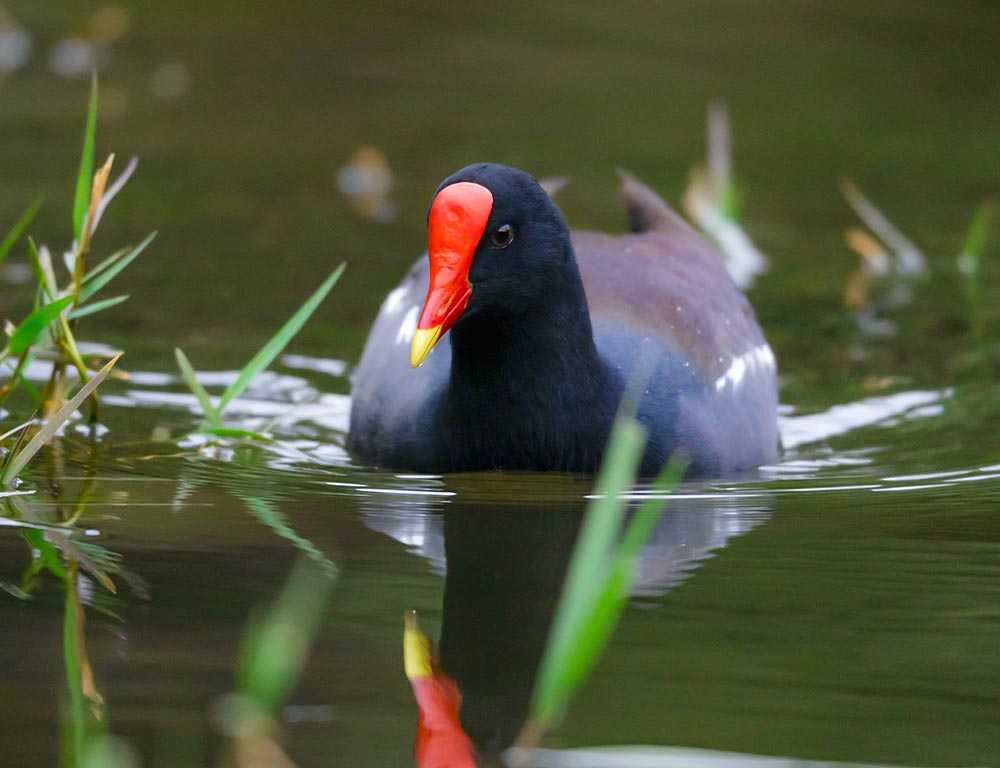
The Common Gallinule is a species of bird found in the Rallidae family. It is native to the Americas, excluding polar regions and many tropical rainforests. This species is most commonly seen in well-vegetated marshes, ponds, canals, and other wetlands.
In July 2011, the American Ornithologists’ Union decided to officially separate the Common Gallinule from the Common Moorhen, a closely related species. The Common Gallinule is a medium-sized freshwater bird, typically measuring between 25 and 30 cm in length.
It has a yellow to greenish-yellow bill with a red tip, and its body is mainly grey, brown, and black. It has a white under-tail with a characteristic white stripe running down its back.
During the breeding season, the male can be distinguished by its red forehead shield and black throat patch. The Common Gallinule is an omnivore, primarily consuming seeds, aquatic vegetation, insects, and other invertebrates.
It will also feed on small fish, amphibians, and crustaceans. To find its prey, the bird will often pick through mud and vegetation with its bill. It typically forms large flocks for foraging, which can be seen searching for food in shallow waters.
The Common Gallinule is an important species in the wetlands of the Americas, providing both a food source for other animals and helping to maintain healthy aquatic ecosystems. Its presence also provides an important indicator of the overall health of the wetland environment.
| Kingdom | Animalia |
| Phylum | Chordata |
| Class | Aves |
| Order | Gruiformes |
| Family | Rallidae |
| Genus | Gallinula |
| Species | G. galeata |
18. American Robin
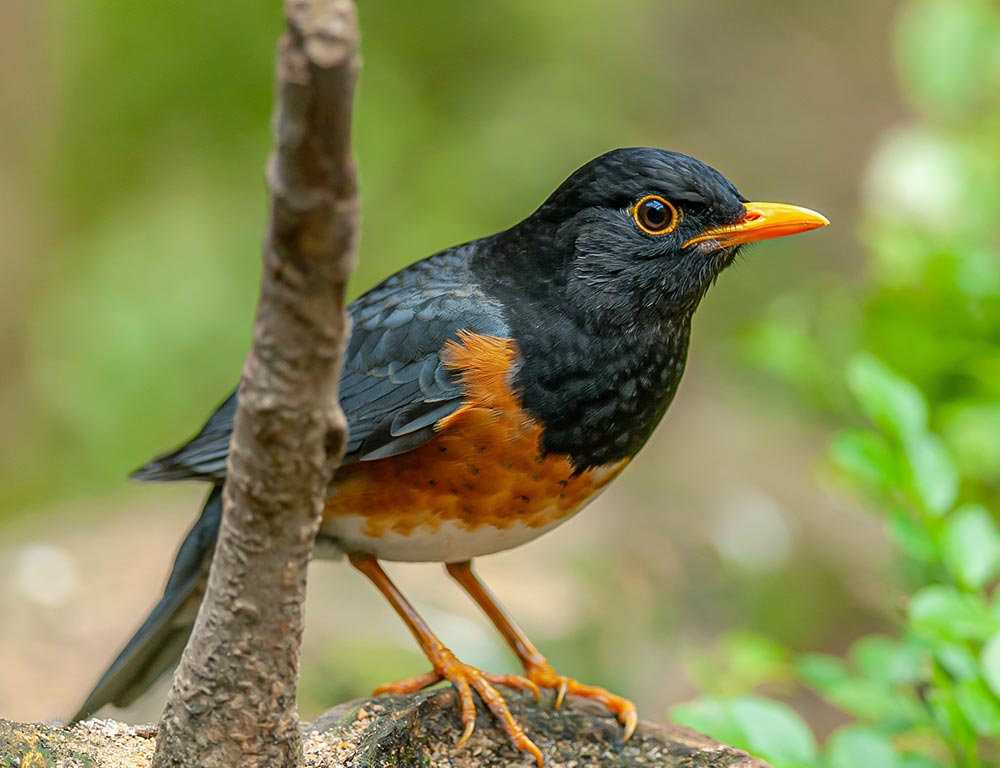
The American robin is a migratory bird that belongs to the true thrush genus and the Turdidae family, the wider thrush family. It is named after the European robin due to its reddish-orange breast, though the two species are not closely related.
The European robin belongs to the Old World flycatcher family. Migratory birds travel from one location to another in response to seasonal changes. The American robin is a migratory bird, which means it moves between different territories in search of food and shelter.
The true thrush genus and Turdidae family are the two groups of birds that the American robin belongs to. The American robin is named after the European robin because of its reddish-orange breast. Despite the similar coloring, the two species are not closely related.
The European robin belongs to the Old World flycatcher family, while the American robin is part of the true thrush genus and Turdidae family. The American robin is an important part of the environment and a great source of beauty in nature.
Its reddish-orange breast is a unique feature that serves as an attractive reminder of its European relative. Despite the two species not being closely related, the American robin will forever be linked to the European robin due to its name and coloration.
| Kingdom | Animalia |
| Phylum | Chordata |
| Class | Aves |
| Order | Passeriformes |
| Family | Turdidae |
| Genus | Turdus |
| Species | T. migratorius |
19. Cerulean Warbler
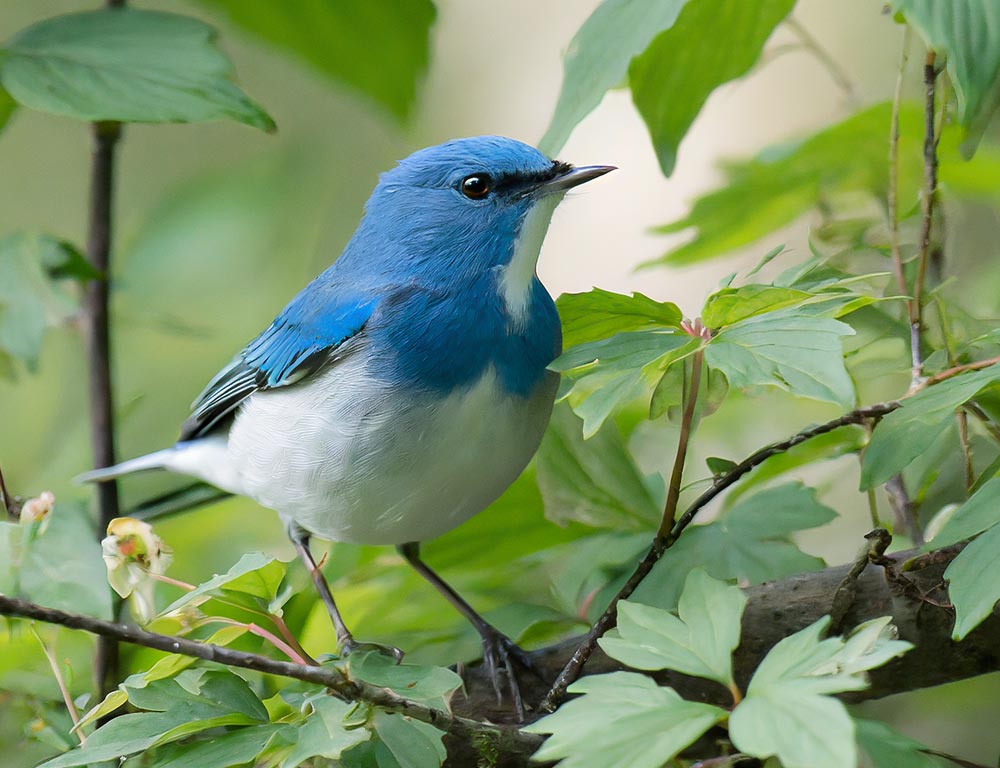
The cerulean warbler is a small songbird in the family Parulidae.
It has an impressive migratory pattern, breeding in eastern North American hardwood forests during the summer months and traveling thousands of miles to the eastern slope of the Andes in South America for the winter.
This small bird prefers subtropical forests during the non-breeding season. The cerulean warbler is a unique species, as it is one of the few birds that migrate such a long distance. It has a long and arduous journey, flying thousands of miles between its two habitats.
The bird starts its journey in the summer months when it travels to the eastern hardwood forests of North America. Here, it breeds and builds its nests. After the summer season, it will start its long journey south to the eastern slope of the Andes in South America.
Once there, it enjoys the subtropical forests of the area until it is time to migrate back north for the summer season. The cerulean warbler’s migratory pattern is incredibly impressive, and it is a remarkable species that can make such a long journey each year.
It is a testament to its adaptability and resilience, and its ability to find suitable habitats in both North America and South America. This species is a great example of how animals have adapted to survive in diverse environments.
| Kingdom | Animalia |
| Phylum | Chordata |
| Class | Aves |
| Order | Passeriformes |
| Family | Parulidae |
| Genus | Setophaga |
| Species | S. cerulea |
20. Tufted Titmouse
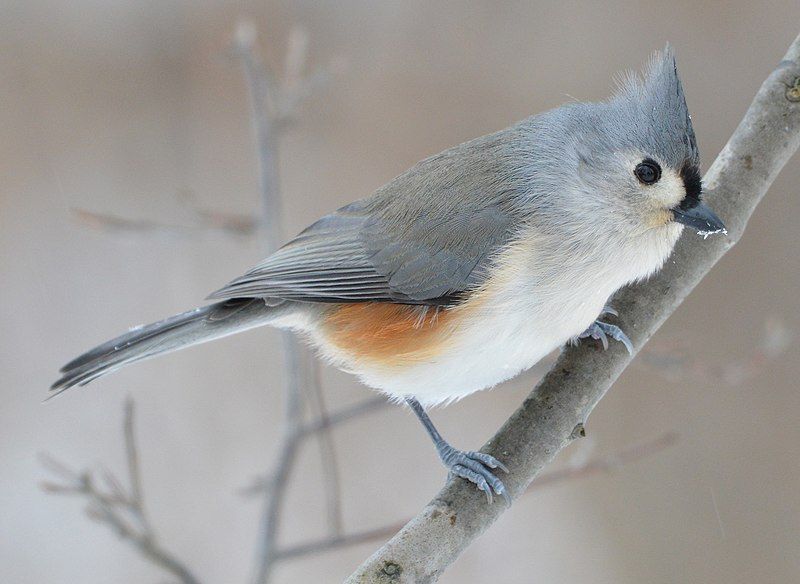
The tufted titmouse is a small songbird typically found in North America. It is a species within the tit and chickadee family. This species has a subspecies known as the black-crested titmouse, which is found in central and southern Texas, and parts southward.
The black-crested titmouse was initially classified as a subspecies of the tufted titmouse but is now considered to be a separate species, called Baeolophus atricristatus. This species is known for its black crest, which distinguishes it from other titmice.
It is also known for its high-pitched call, which is often used to indicate its presence and attract mates. The tufted titmouse is a widely distributed species and can be found in a variety of habitats, including woodlands, gardens, and parks.
They are known for their acrobatic abilities and are often seen hanging upside-down while foraging for food. Tufted titmice are omnivorous and can be seen eating a variety of insects, seeds, and fruits.
| Kingdom | Animalia |
| Phylum | Chordata |
| Class | Aves |
| Order | Passeriformes |
| Family | Paridae |
| Genus | Baeolophus |
| Species | B. bicolor |
21. Cyanocitta
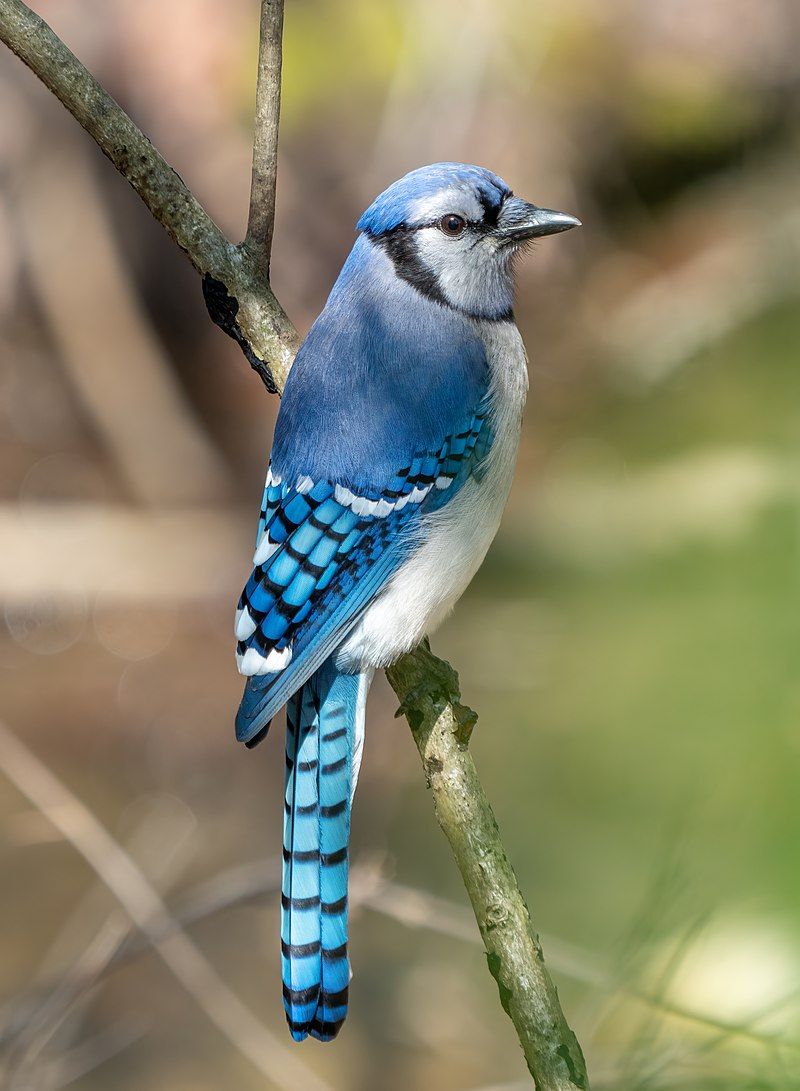
Cyanocitta is a genus of birds that belongs to the Corvidae family. The Corvidae family consists of crows, jays, and magpies. This genus was established by Hugh Edwin Strickland in 1845 and currently includes a few different species.
The name Cyanocitta is a combination of two Greek words, kuanos and kitta. Kuanos means “dark blue” and kitta means “jay”. This implies that the birds included in this genus have a dark blue coloration. The word Cyanocitta can be roughly translated to “dark blue jay”.
This genus is particularly interesting because its members are among the most colorful of all Corvidae birds.
| Kingdom | Animalia |
| Phylum | Chordata |
| Class | Aves |
| Order | Passeriformes |
| Family | Corvidae |
| Genus | Cyanocitta |
22. Red-Breasted Nuthatch
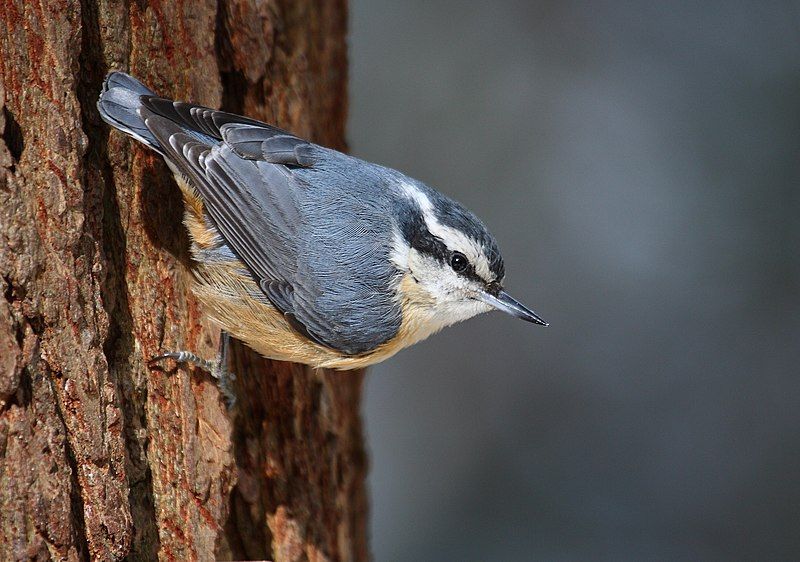
The red-breasted nuthatch is a small songbird with distinct features. It has unmistakable blue-grey upperparts, as well as cinnamon underparts, a white throat and face with a black stripe through the eyes, a straight grey bill, and a black crown.
This combination of colors and patterns makes it an easy bird to identify in the wild. The red-breasted nuthatch is also known for its unique call. It has been described as sounding like a tin trumpet and is high-pitched and nasal in tone.
This call often serves as an alarm or warning but is also used to communicate with other members of its species. It is a sound that can be heard in many areas and is a distinguishing feature of the red-breasted nuthatch.
Overall, the red-breasted nuthatch is an interesting and attractive bird that is easily recognizable in its natural habitat. Its colorful body and unique call make it an exciting species to observe, and it is a beautiful addition to any bird-watcher list of sightings.
| Kingdom | Animalia |
| Phylum | Chordata |
| Class | Aves |
| Order | Passeriformes |
| Family | Sittidae |
| Genus | Sitta |
| Species | S. canadensis |
23. Boat-Tailed Grackle
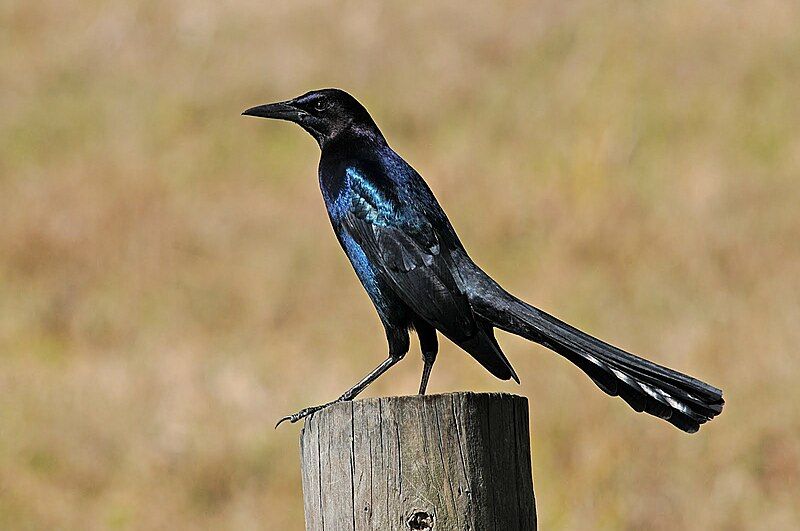
The Boat-tailed Grackle is a type of bird belonging to the Icteridae family. It is found as a permanent resident along the coasts of the southeastern United States.
The Boat-tailed Grackle is a passerine bird, meaning it has a long, strong beak and robust feet that are well adapted for perching. This species of bird is characterized by its long, distinctive tail and glossy black plumage.
It is a social bird and is often seen in groups, flocking around parks, coastal areas, and marshes. It is also known to be quite vocal and can be heard making loud, raucous calls.
The Boat-tailed Grackle is a year-round resident of the southeastern United States, and it is a common sight in many areas along the coast. Its presence is a reminder of the beautiful natural diversity found in the region.
| Kingdom | Animalia |
| Phylum | Chordata |
| Class | Aves |
| Order | Passeriformes |
| Family | Icteridae |
| Genus | Quiscalus |
| Species | Q. major |
24. Blue-And-Yellow Macaw
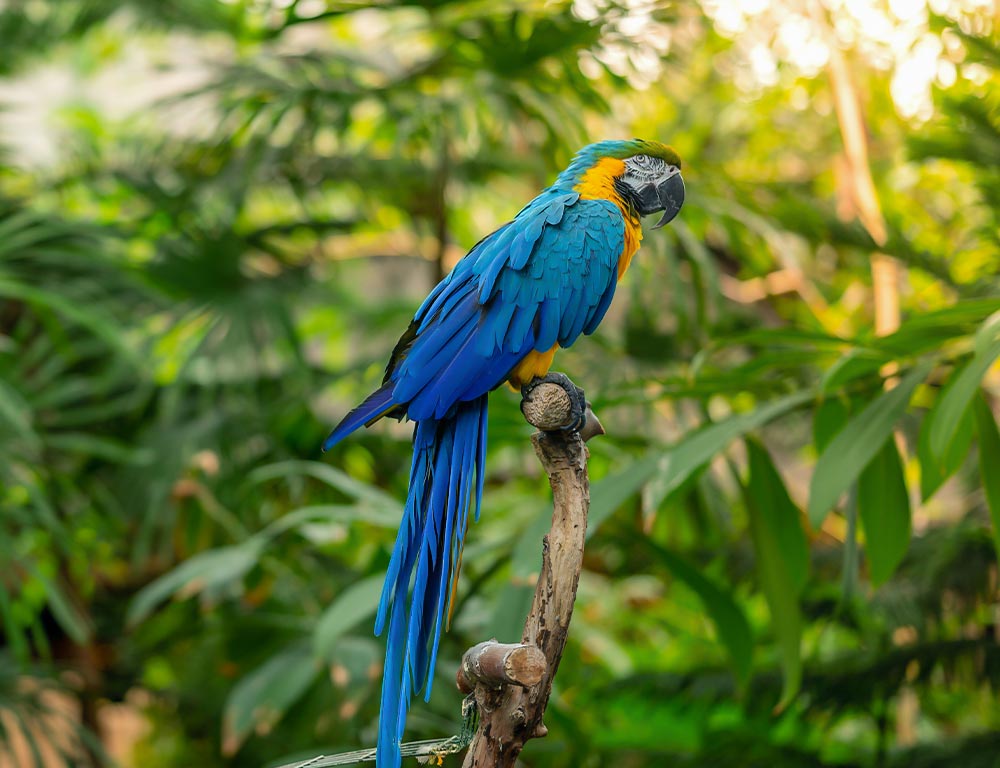
The blue-and-yellow macaw, also known as the blue-and-gold macaw, is a large bird native to South America. It has a distinctive appearance, with its mostly blue back and light yellow/orange underside. Its head is also a gradient of hues of green.
It belongs to the family of neotropical parrots known as macaws. The blue-and-yellow macaw is a popular pet, due to its striking coloration as well as its intelligence and sociability. These birds are also highly social, and in the wild, they form large flocks.
They have a loud call, which they use to communicate with their flockmates. They are also adept climbers and spend a lot of time in the trees. The blue-and-yellow macaw has a varied diet and can eat both fruits and seeds.
The blue-and-yellow macaw is a popular pet, but it also faces threats in the wild. Their natural habitat is being destroyed as a result of deforestation and other human activities. Additionally, they are hunted for their feathers, which are used in traditional ceremonies.
As a result, the population of the blue-and-yellow macaw has decreased drastically, and it is now listed as endangered by the IUCN Red List. Conservation efforts are underway to protect this species, but they are still under threat and at risk of extinction.
| Kingdom | Animalia |
| Phylum | Chordata |
| Class | Aves |
| Order | Psittaciformes |
| Family | Psittacidae |
| Genus | Ara |
| Species | A. ararauna |
25. Shiny Cowbird
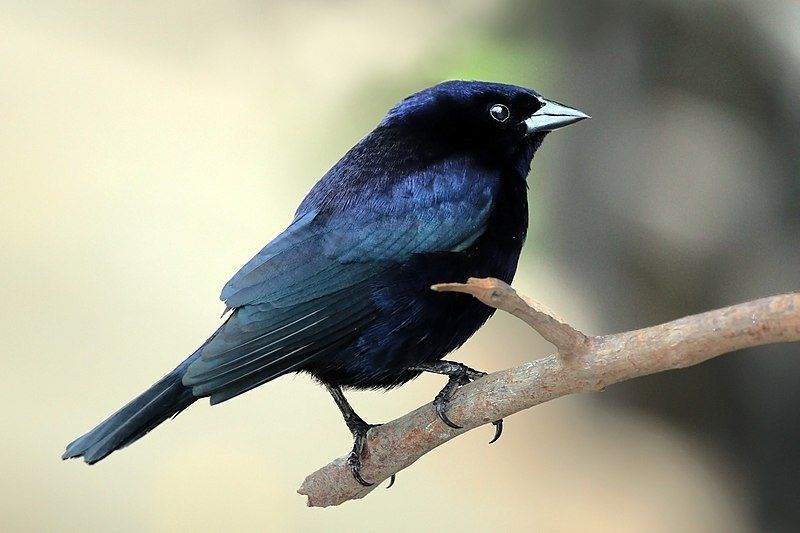
The Shiny Cowbird is a type of bird in the Icteridae species, which is a family of birds found in the New World. This passerine bird breeds in most of South America, but avoids dense forests and high altitudes, such as mountains.
This is likely due to the difficulty of finding food sources in such areas. Where the Shiny Cowbird does thrive, it is an opportunistic feeder, eating seeds, insects, and other small animals. It is also a brood parasite, meaning it lays its eggs in other species’ nests.
This adaptation helps the Shiny Cowbirds ensure that their eggs will have a higher chance of hatching and surviving.
| Kingdom | Animalia |
| Phylum | Chordata |
| Class | Aves |
| Order | Passeriformes |
| Family | Icteridae |
| Genus | Molothrus |
| Species | M. bonariensis |
Conclusion
Bluebirds are an integral part of Florida’s ecosystem. Their presence helps to keep insect populations in check and provides a source of food for other wildlife. As a result, it is important to protect their habitats and ensure their continued survival.
By creating bird-friendly areas and limiting the use of pesticides, we can help to ensure that bluebirds remain a part of Florida’s natural environment for generations to come.